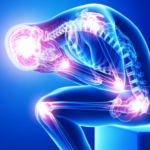Interventional medicine is a specialized field where doctors use minimally invasive procedures to diagnose and treat pain. These techniques are typically more direct than traditional medication, targeting the source of discomfort with specific procedures. Pain specialists can utilize these interventional methods to offer relief when conservative treatments do not work. Here is the role of interventional procedures at a pain center:
Targeting Pain Source
Pain specialists need to find the exact spot causing your discomfort. They utilize advanced imaging methods to guide their approach. This technology enables doctors to visualize nerve pathways and accurately identify the sources of pain. With this information, they can give treatments directly to the problem area, aiming to make the process more effective. Diagnostic injections may also be used to confirm the precise source of your pain.
The process may begin with a thorough review of your medical history and a physical examination. Once the doctor identifies the source of the pain, they can develop a customized treatment plan. This approach is much more targeted than giving general pain medications that impact your entire system.
Reducing Inflammation
Epidural injections deliver anti-inflammatory medications directly into the space around your spinal cord. The procedure involves inserting a thin needle into the epidural space, guided by imaging. During the treatment at a pain center, patients typically lie face down on an examination table.
Before the injection, a local anesthetic may be used to numb the area. Once the needle is correctly positioned, the medication can be injected to reduce inflammation around the affected nerves. After the procedure, you may feel temporary soreness at the injection site.
Applying Heat
Radiofrequency ablation is a procedure that uses heat energy to disrupt nerve signals responsible for transmitting pain to the brain. During the procedure, a specialized needle delivers radiofrequency waves to targeted nerve tissues, creating controlled lesions through heat. The heat raises the nerve tissue temperature to interrupt pain signals while leaving other nerve functions intact. Patients may receive local anesthesia and mild sedation for comfort. Over several weeks, you might notice a gradual reduction in pain as the treated nerves stop transmitting pain signals.
Stimulating Nerves
Peripheral nerve stimulation is a procedure that involves placing small electrodes near specific nerves to help manage pain. These electrodes send gentle electrical pulses that aim to disrupt pain signals traveling to your brain. The system can be used either temporarily for testing or permanently with an implant.
During the trial phase, thin wires connect to an external device worn on your belt. If you find the treatment helpful, your doctor may recommend a permanent implant. The permanent system is completely placed under your skin and typically includes a small battery-powered generator that controls the electrical pulses.
Visit a Pain Center Today
Modern pain clinics provide comprehensive interventional services suited to your individual needs. These clinics utilize advanced technology and employ specialized experts to treat chronic pain that impacts your daily life. The pain management team includes doctors, nurses, and support staff trained in interventional techniques. Treatment plans often combine various approaches to help improve your comfort and function. If chronic pain impacts your quality of life, schedule a consultation with a pain management specialist. They can assess your condition and discuss whether interventional procedures may be beneficial.









Leave a Reply